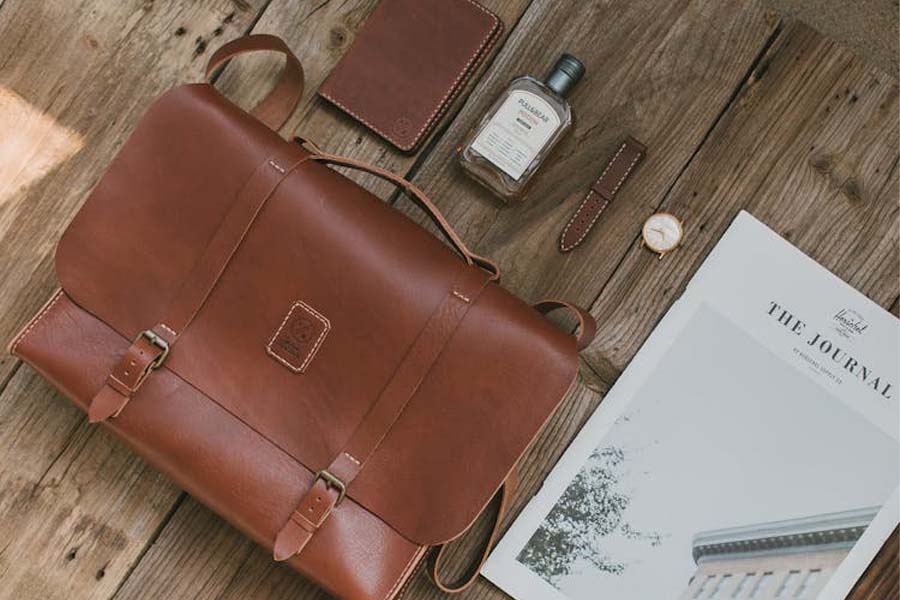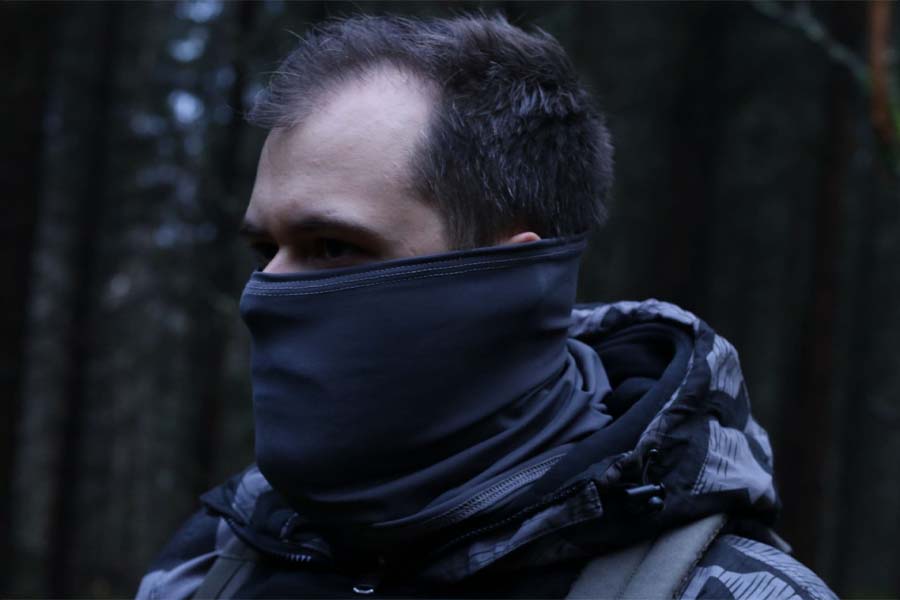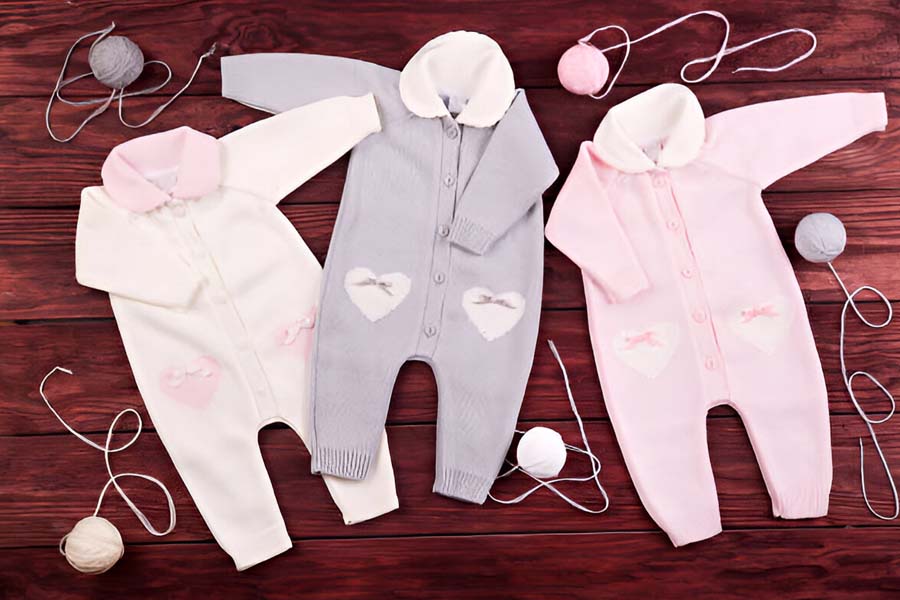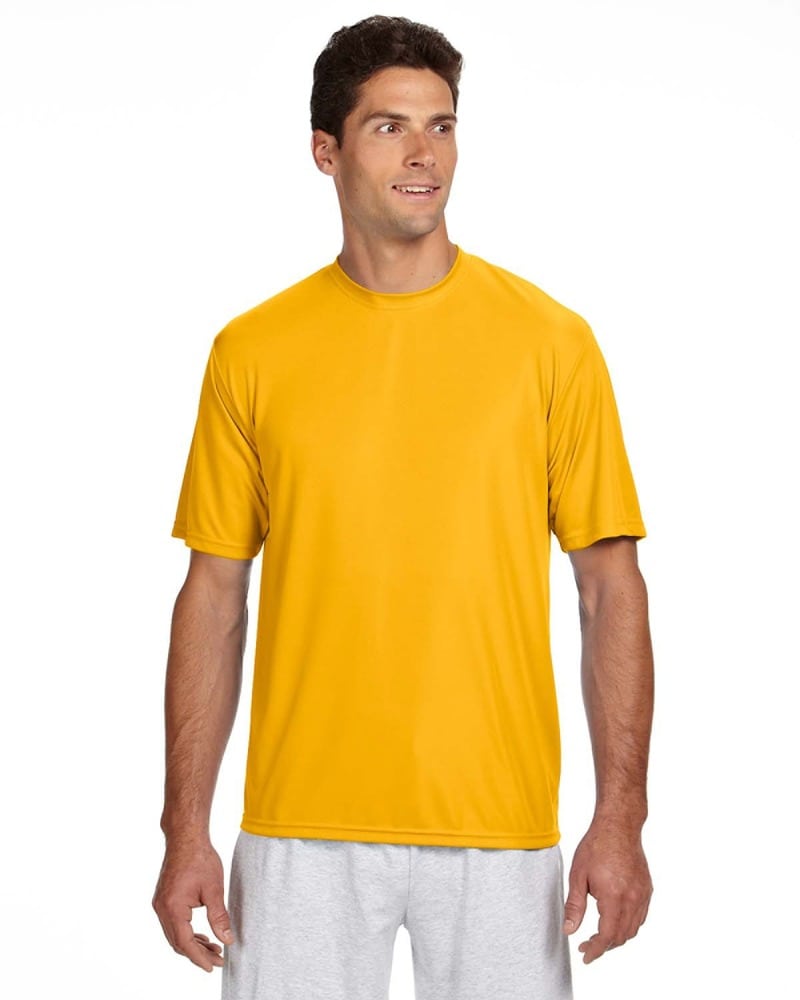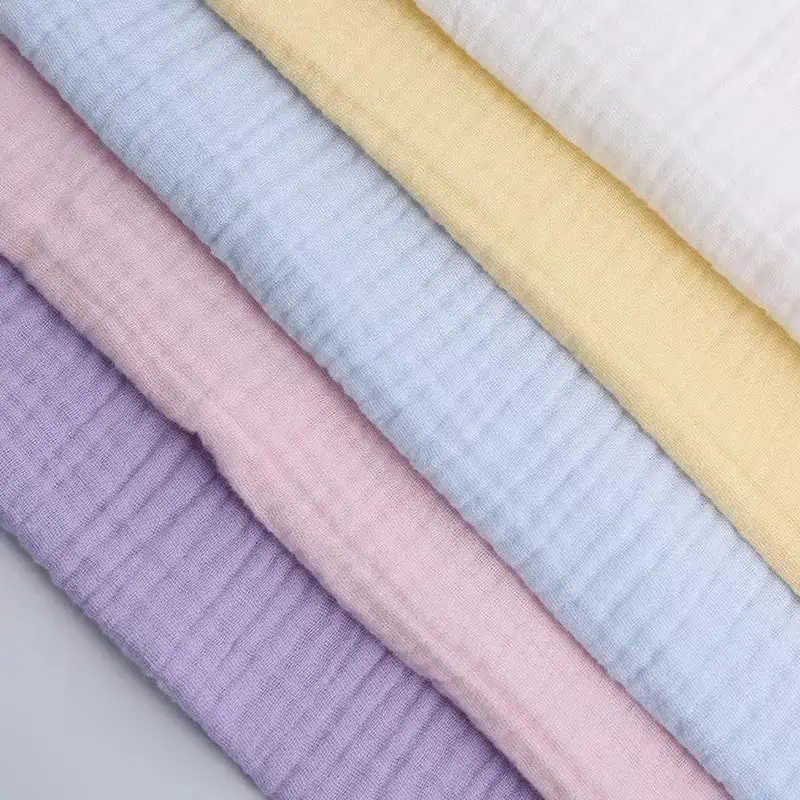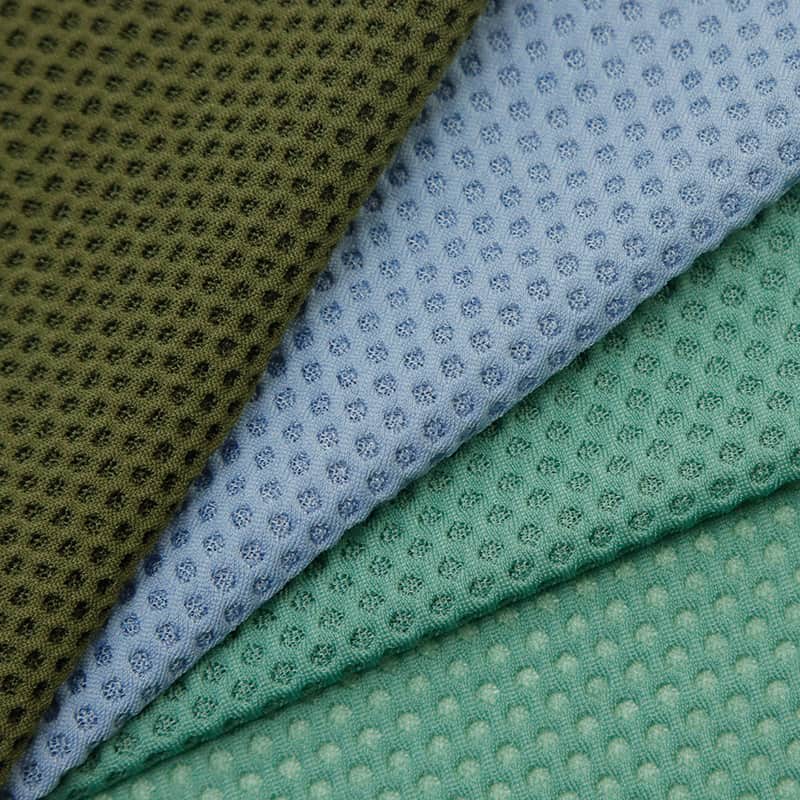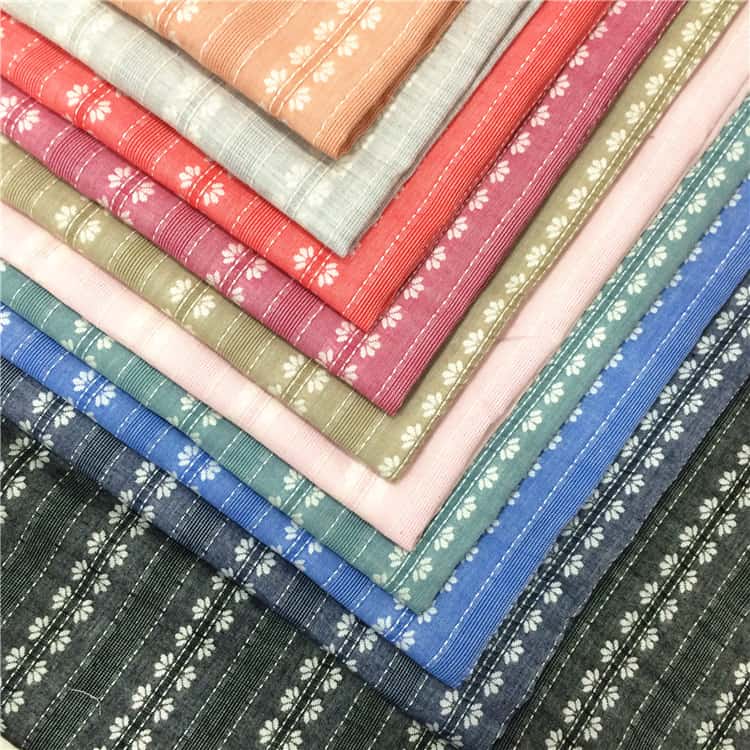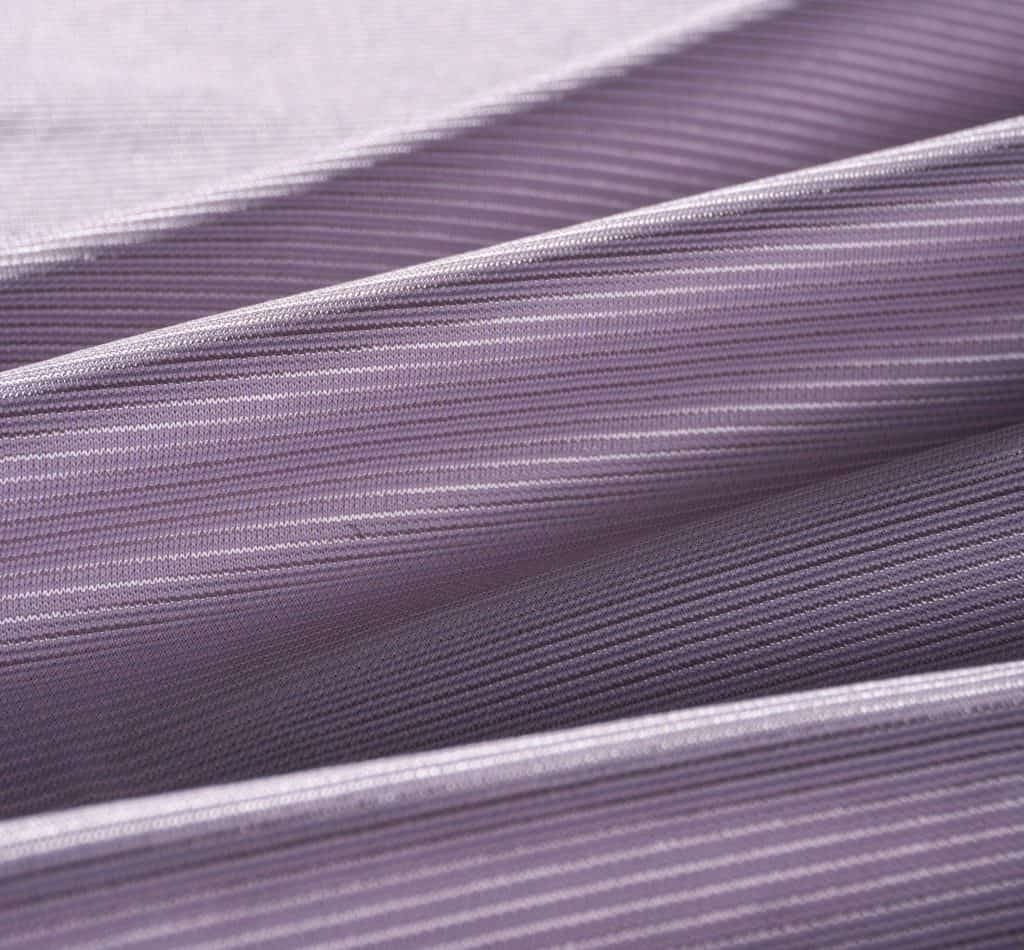Have you ever worn a warm wool sweater only to find that it is heavy and uncomfortable when wet? In the 1970s, Malden Mills from Massachusetts made polyester fleece fabric as a substitute for wool.
Yvon Chouinard, the founder of Patagonia, found a better alternative to a wool sweater. He used an unlikely material – an acrylic pile fabric that repelled water. With the help of his wife and a talented seamstress, Yvon turned this fabric into the very first fleece sweater.
After creating the first prototype of fleece sweaters, Patagonia collaborated with Malden Mills to produce the first durable and lightweight pile fabric made of polyester.
The owner of Malden, Aaron Feuerstein, did not patent fleece so that more people could afford and use it. In current times, the company produces the well-known fleece known as PolarTec.
What Is Fleece Fabric?
Fleece fabric is popular for outdoor and cold-weather clothes. It’s comfy because it feels soft and plush. Fleece can come in different textures, like smooth or “furry,” which changes how it looks and works.
The texture can also affect how warm and dry it keeps you. This is why fleece is great for staying cozy in the cold.
Fleece can be light or heavy, depending on what it’s used for. Fleece fabric weight plays a crucial role in determining its suitability for different activities and weather conditions. The following are three main weights of fleece:
Lightweight Fleece Fabric — 100 GSM to 200 GSM
Lightweight fleece is thinner and easier to pack. It’s more breathable and not as warm as thicker fleece. It’s great for activities that require a lot of movement, such as hiking, running, or biking.
Midweight Fleece Fabric– 200 GSM to 300 GSM
Midweight fleece is medium-thick and offers a balance of breathability and warmth. You can use it for high-output activities or as a warm layer on cooler days because it’s versatile. If you want a fleece that can do both, a midweight fleece is a way to go.
Heavyweight Fleece Fabric– 300 GSM and above
Heavyweight fleece is like a bouncer at a nightclub; it keeps the cold out and the sweat in. It offers excellent insulation and protection against cold weather.
What Is Fleece Fabric Made Of?
Fleece is a fabric made from polyester. It is very light, strong, and sturdy. Fibers are knitted together to make one side of the fabric soft and fluffy while the other side is smoother.
The polyester fibers of a fleece fabric are melted down and extruded through a spinneret to create long, thin strands that are then woven or knitted together to form a dense, fluffy fabric with insulating properties.
Manufacturers of fleece have the option to incorporate other synthetic and natural fibers, such as nylon, acrylic, and cotton, into the production process of fleece rather than solely depending on polyester as the main material.
What Is Fleece Fabric Used For?
Fleece is both fashionable and functional. It’s known for keeping you warm and dry. Here are a few products you can make with fleece fabric.
Winter gear
Fleece fabric can warm you in cold temperatures because it wicks away sweat. Winter gear made of fleece jackets, gloves, and hats helps you stay warm and active during the winter.
Outdoor gear
Fleece jackets and vests offer warmth and freedom of movement for physical activities. It is great for outdoor activities because it dries quickly and performs well in wet conditions.
Baby products
Fleece fabric is soft and gentle on a baby’s delicate skin. It is fluffy and cozy, perfect for making small fleece blankets, swaddles, and more. Sure, the baby loves it.
Automotive products
Fleece is a practical option for car seats because of its ability to get rid of moisture. The fabric’s softness and warmth make the passengers comfortable during long drives. Most fleece fabrics are easy to clean and maintain.
Other uses of fleece fabric:
Fleece fabric is also popular in home decor, such as:
- cozy blankets,
- throws,
- and decorative pillows.
Types of Fleece Fabrics
There are several different types of fleece on the market, such as:
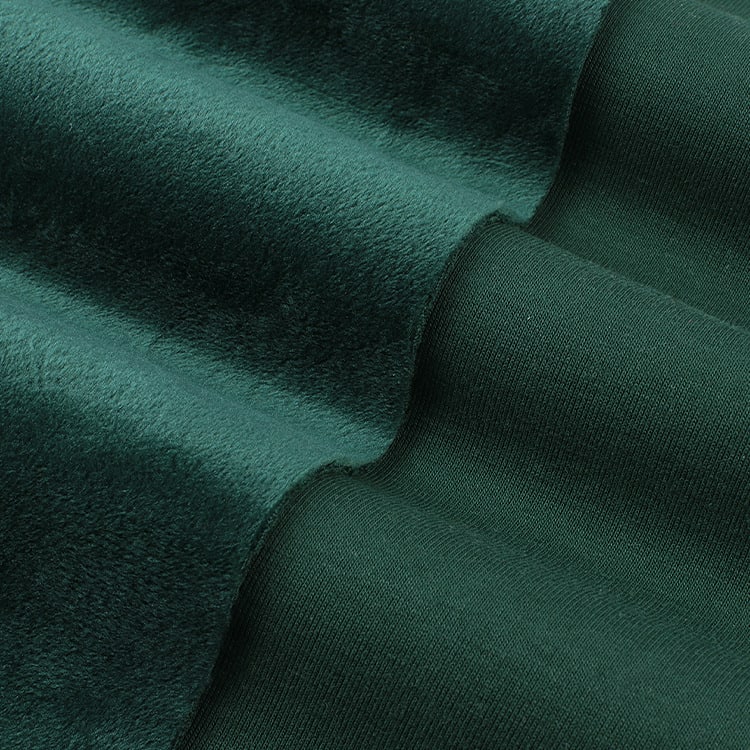
Cotton-blended fleece fabric
This fabric type is mixed with cotton fibers. It has a smooth outer surface and a plush inner nap used for sweatpants and sweatshirts.
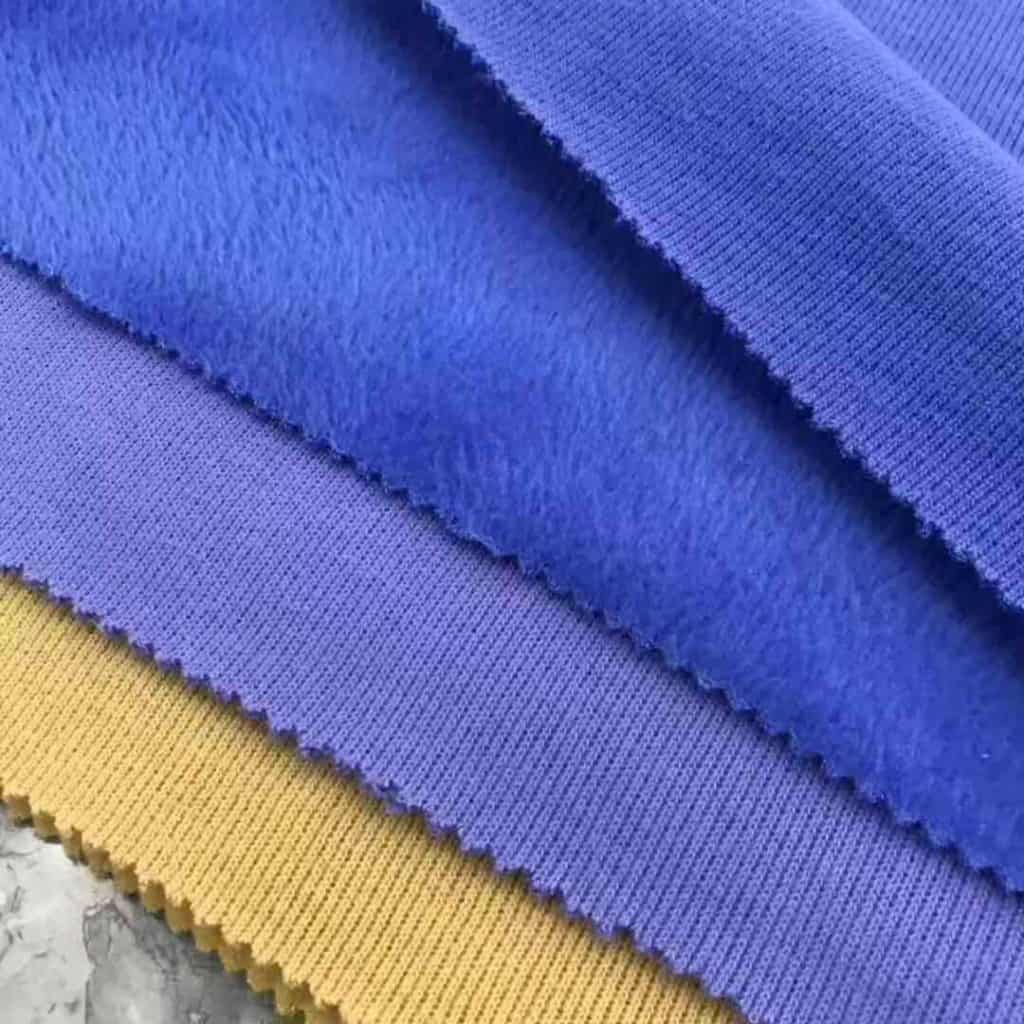
Polyester
This type is smooth on the outside and plush on the inside, like cotton-blend fabrics. It only differs in the way that its smooth side has a shiny appearance and does a better job of repelling moisture.
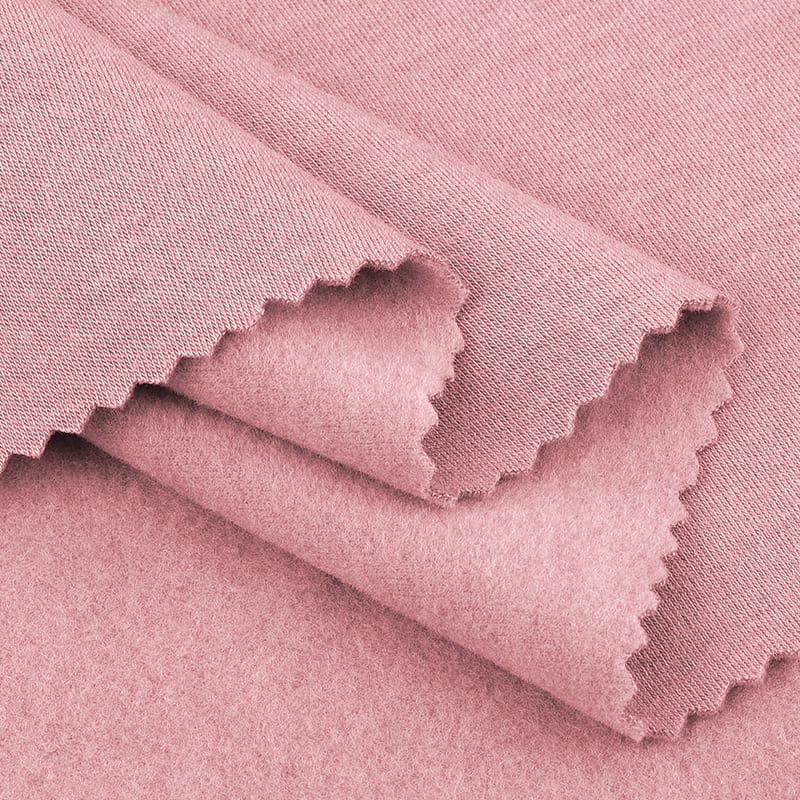
Lycra Spandex Fleece
This is an elastic fleece fabric consisting of a majority of cotton and a small amount of lycra spandex. It dries quicker than other fabrics. Cycling shorts, swimsuits, and wetsuits are examples of this type of fabric.
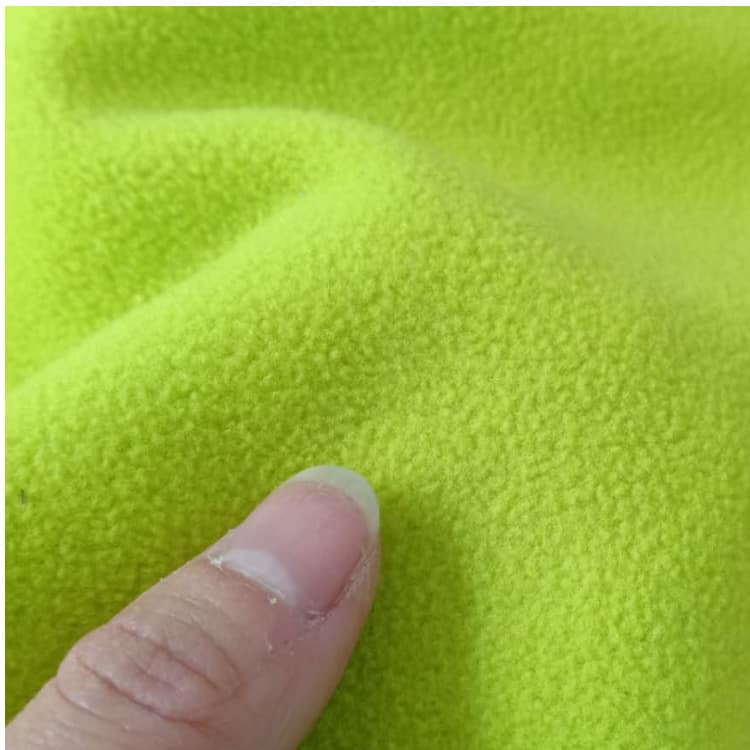
Microfleece
It is the thinnest of all types of fleece. It is soft, lightweight, and flexible. It is a good fabric for blankets, bathrobes, and many more.
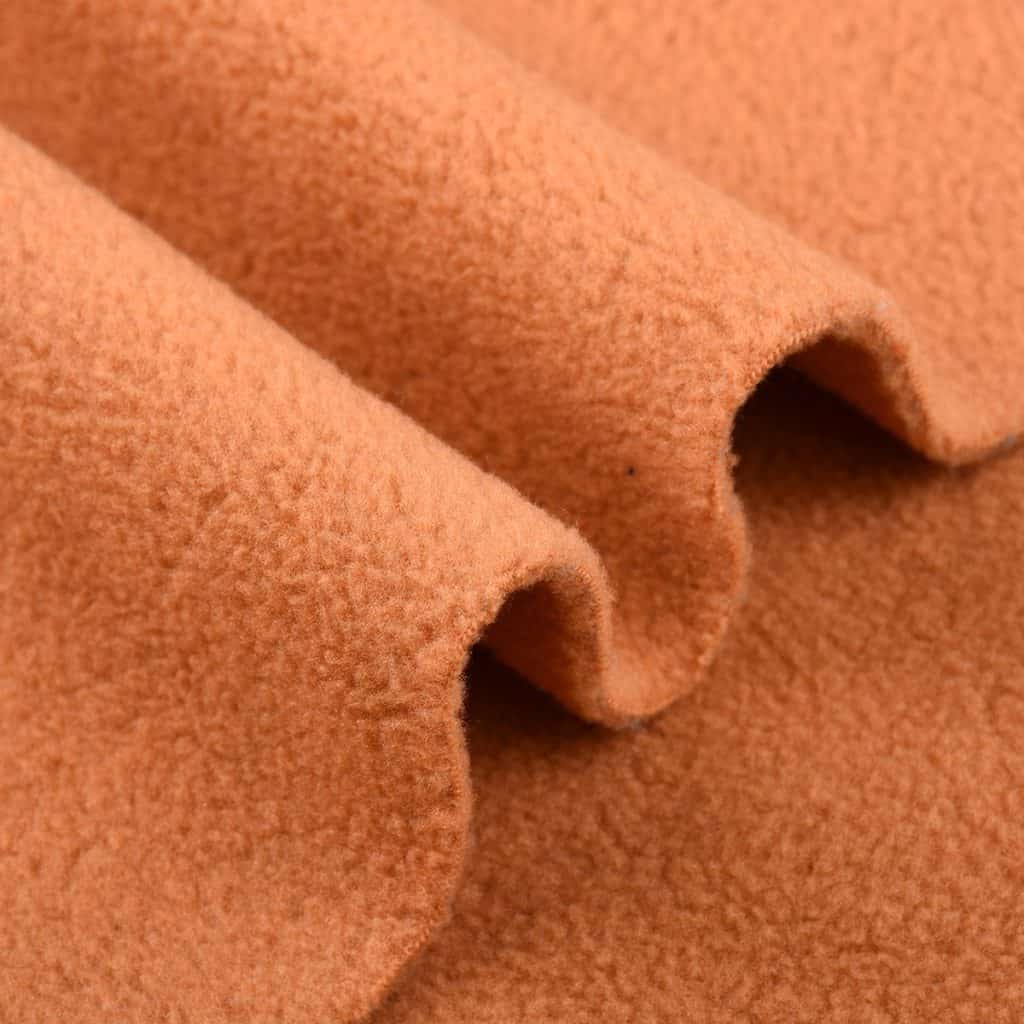
Polar Fleece
Polar fleece fabric is thicker and provides greater warmth compared to microfleece. Colder regions prefer using this kind of fiber for their jackets and blankets.
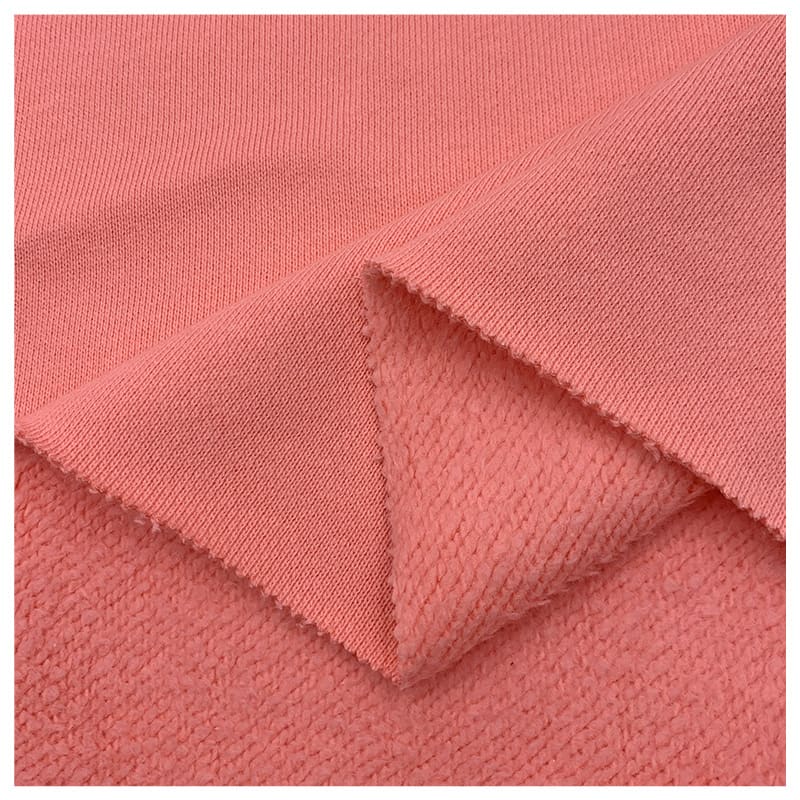
French terry
French terry fleece lacks a fluffy texture and is unbrushed on both sides, making it thin and flat.
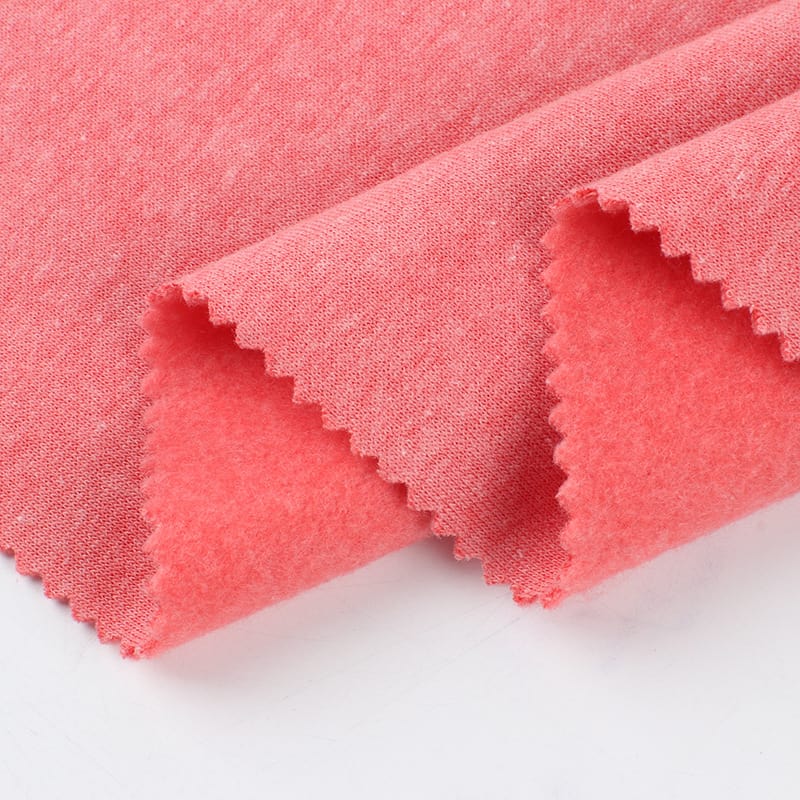
Slub
This type of fleece is knit from two different sizes of yarn twisted together to give it a textured look.
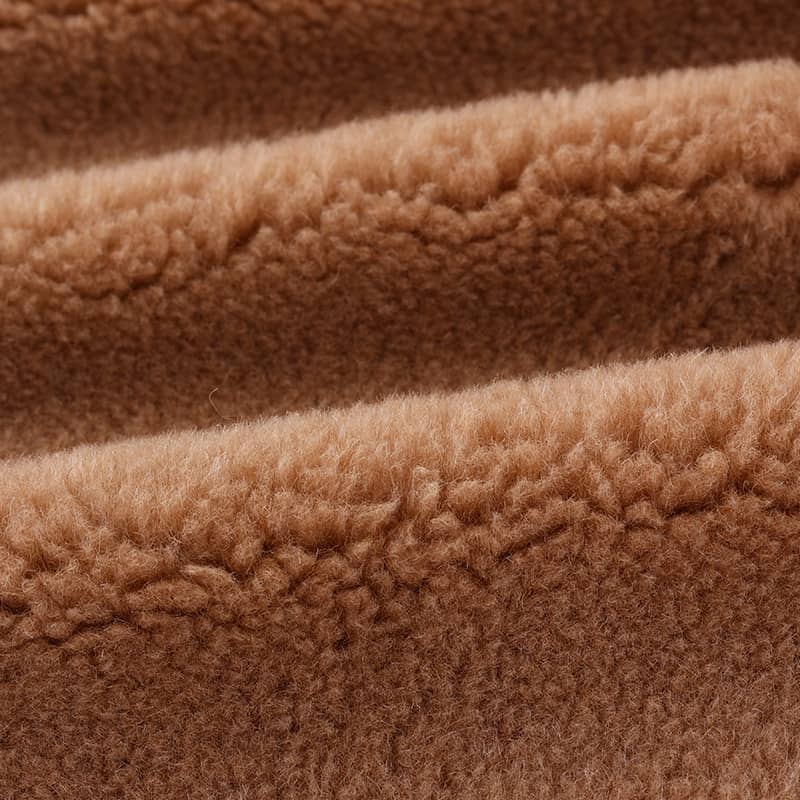
Sherpa
Sherpa fleece is 100% polyester. It is very fluffy. It mimics wool fleece. It’s often used for lining clothes for warmth.
Anti-pill
Anti-pill fleece is a soft fabric designed not to develop small balls of fabric called pills. These pills can form where the fleece rubs against the body. With anti-pill fleece, you can enjoy a better-quality fabric that lasts longer.
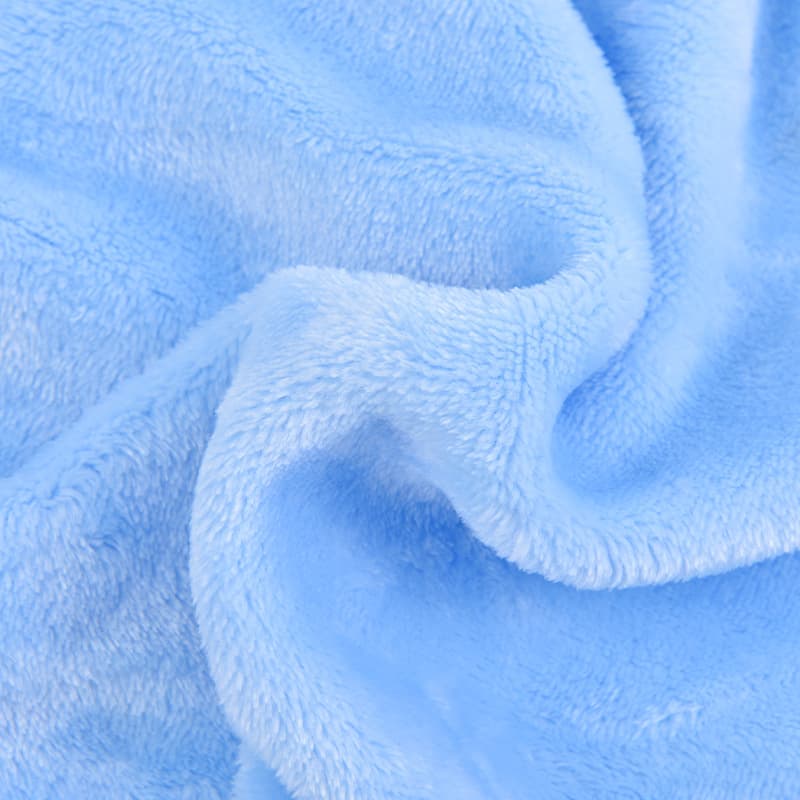
Coral Fleece
Coral fleece is ideal for winter wear, children’s clothing, and home textiles. It has moisture-blocking and sweat absorption properties from its dense fibers, large surface area, and masking abilities. It is also reliable, as it does not lint or fade.
What’s The Difference Between Fleece and Wool?
Here’s a clear comparison of the unique features and differences between fleece and wool fabric. Whether you’re a fashion enthusiast or curious about textiles, this will help you find a better fabric for your next clothing project.
Difference between fleece and wool fabric:
Similarities between fleece fabric and wool:
Difference Between Fleece vs. Flannel
Frequently Asked Questions about Fleece Fabrics
Is Fleece Sustainable?
There are types of fleece fabric that are made from recycled or sustainable materials. Bamboo and organic cotton, for example, are common materials used in the production of sustainable fleece fabrics. Take note that it is important to take measures to prolong their usage to help the environment
Is fleece better than cotton?
On colder days, fleece is a better option than cotton, as it gives warmth like a blanket.
Fleece is synthetic and made from polyester; it’s light, strong, and keeps you warm. Cotton is soft and breathable, making it ideal for warmer weather.
Is fleece hot in summer?
Fleece is not ideal for summer. Wearing fleece in hot weather can make you feel too warm and uncomfortable.
Is fleece itchy?
Fleeces can itch if made from low-quality materials or not cared for. But high-quality fleece is soft and comfortable. Some even have anti-itch coatings. If you’re prone to itching, choose high-quality fleece and follow care instructions.
Does fleece clothing shrink?
Yes, it does. But you can prevent it by washing it in cold water, drying it on low heat, or letting it air dry. Don’t use fabric softeners or bleach. Check the label for care instructions.
Conclusion
Fleece fabric is a versatile and durable material. Textile industries use this fabric for various purposes, from outdoor clothing to home decor. But it’s crucial to take care of it to maintain its softness and avoid shrinkage.
Fleece remains a practical and comfortable choice for many, and its popularity is expected to continue in the future.







